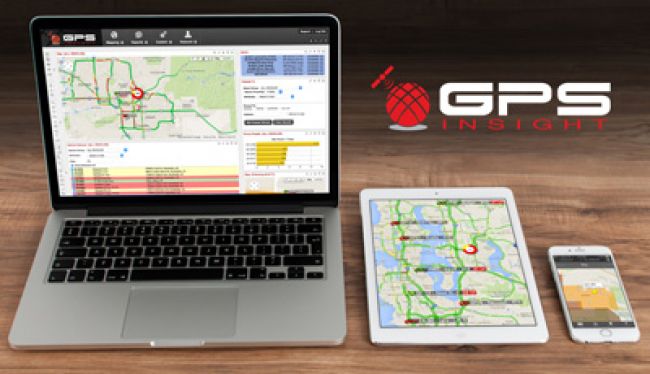
How to Avoid Big Data Overload
Telematics data offers the modern utility fleet vast opportunities to gain insight about their operation and take action. But the sheer number of those opportunities can be overwhelming, and deciding what data to study – plus how to make it meaningful – can be a struggle, like attempting to sip water from a firehose.
Beth Daiber, CPA, fleet administration supervisor for Ameren Illinois Company, has found that for her organization, it helps to both track and share data that ties into corporate initiatives. “There are a lot of things that I could supply data on, and analysis that I do behind the scenes,” she said. “I’m trying to make sure that I’m not overwhelmed with all the information that I could collect.”
Ameren focuses its telematics data on idling and speed for its 3,500-unit fleet. The company’s plan from day one was to focus on one or two initiatives first and build from there, Daiber said. Monitoring both idling and speed tie in with corporate initiatives and support the project’s ROI.
Even with such a narrow focus, there can be too much of a good thing, especially when it comes to reporting results to leadership. So, rather than simply track vehicle idling, for instance, Daiber provides reports that show idling as a percentage of operating time. “It seems to be a better reflection of how the assets are being used compared to total hours,” she said.
Additional charts compare idling hours based on class of the asset. A top 20 list of the most-idled vehicles helps the operations team know where to focus its efforts. According to Daiber, “That has made a big impact.”
Starting Points
While Ameren has been able to focus its efforts on two data points that align with its goals, clearly there is a wealth of telematics data available today for those utility fleets that use the technology. So, how does a fleet know how to choose the data that will most benefit their operation?
Chris Ransom, solutions engineer for fleet management tracking provider Verizon Connect (www.verizonconnect.com), suggested a few starting points. “Almost all mobile businesses can benefit from tracking core metrics around safety (speed and harsh maneuvering), productivity (utilization, time spent on-site) and vehicle health (trouble codes and preventive maintenance intervals),” he said.
Ryan Driscoll, marketing director for telematics provider GPS Insight (www.gpsinsight.com), recommended looking for data related to a “high-impact issue or challenge. The fleet manager or operations manager for the utility has a lot more to do than just manage the data from telematics. The information needs to be easy to understand and in a format that allows them to take action quickly.”
Action Steps
Data has perhaps become overwhelming, at least in part, due to the addition of new features from telematics providers. But rather than simply activate a new feature when it becomes available, both Ransom and Driscoll advised performing regular evaluations.
Ransom encouraged a semiannual look at the data that’s been provided and what is needed. “Businesses should evaluate whether their solution is helping them obtain their projected ROIs and if their provider is continuously driving value to their operation,” he said.
Driscoll suggested going “back to the drawing board with all the key stakeholders in the businesses to determine what their current challenges are.” Once that list of challenges has been compiled, “they should determine the impact of those challenges and then focus in on how vehicle and location intelligence can solve those challenges for the business,” he said.
It is possible that a utility fleet’s telematics provider has already made that data available, and a quick conversation with the account manager may help to “keep pulling ROI from the existing telematics solution you have,” Driscoll said.
That conversation also may uncover needs that the utility wasn’t aware it had, Ransom said. “Generally speaking, most businesses understand the importance and potential ROI of tracking vehicles, but there are lots of less obvious needs, such as asset tracking and visibility into their workforces, that they may need help uncovering.”
About the Author: Sandy Smith is a freelance writer and editor based in Nashville, Tennessee.
*****
Emerging Data Points
As telematics providers continue to improve their data collection capabilities, a greater abundance of potential information is uncovered. So, what new data points are utilities likely to begin tracking in the future? Ryan Driscoll, marketing director for GPS Insight, and Chris Ransom, solutions engineer for Verizon Connect, offered their predictions.
Driver safety data. Driscoll anticipates driver scorecards that “rank drivers based on driving habits to highlight your best drivers and flag your most at-risk drivers.” This will allow for more targeted driver coaching.
Visibility into vehicle health. “Diagnostics and usage information alone may provide increased ROI for fleet managers,” Ransom said. “For instance, tire pressure status gives drivers and fleet managers the ability to address issues sooner, helping save fuel and extending the life of the tires. The value of this expands exponentially when we add vehicles over an extended period of time.” Despite the value in tying telematics to maintenance, “it has surprisingly little adoption,” Driscoll said.
Safety metrics in real time. Many fleets already collect driver data related to actions such as speeding and hard braking. Getting the data in near real time provides additional benefits, Ransom said. A dashboard or scorecard lets a driver know where they rank, and lets managers know who might need additional training.
Employee performance. “Using telematics data to verify payroll is a critical data set to look at to significantly reduce labor costs,” Driscoll said. And according to Ransom, using location and job information can help “assign jobs to the correct workers and vehicles, furthering the benefit of gathering, analyzing and acting on these job insights.”

